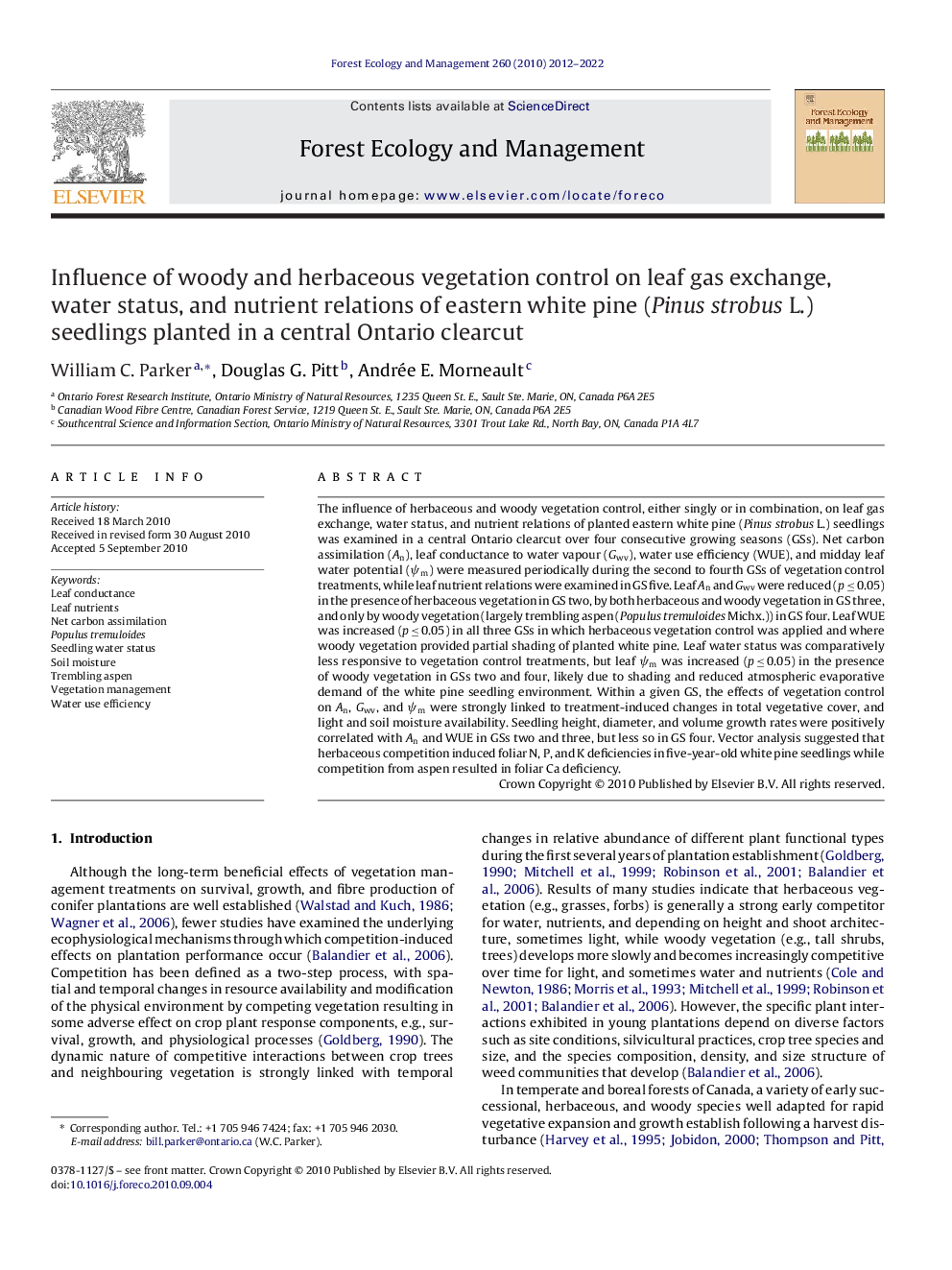| کد مقاله | کد نشریه | سال انتشار | مقاله انگلیسی | نسخه تمام متن |
|---|---|---|---|---|
| 88208 | 159290 | 2012 | 11 صفحه PDF | دانلود رایگان |

The influence of herbaceous and woody vegetation control, either singly or in combination, on leaf gas exchange, water status, and nutrient relations of planted eastern white pine (Pinus strobus L.) seedlings was examined in a central Ontario clearcut over four consecutive growing seasons (GSs). Net carbon assimilation (An), leaf conductance to water vapour (Gwv), water use efficiency (WUE), and midday leaf water potential (ψm) were measured periodically during the second to fourth GSs of vegetation control treatments, while leaf nutrient relations were examined in GS five. Leaf An and Gwv were reduced (p ≤ 0.05) in the presence of herbaceous vegetation in GS two, by both herbaceous and woody vegetation in GS three, and only by woody vegetation (largely trembling aspen (Populus tremuloides Michx.)) in GS four. Leaf WUE was increased (p ≤ 0.05) in all three GSs in which herbaceous vegetation control was applied and where woody vegetation provided partial shading of planted white pine. Leaf water status was comparatively less responsive to vegetation control treatments, but leaf ψm was increased (p ≤ 0.05) in the presence of woody vegetation in GSs two and four, likely due to shading and reduced atmospheric evaporative demand of the white pine seedling environment. Within a given GS, the effects of vegetation control on An, Gwv, and ψm were strongly linked to treatment-induced changes in total vegetative cover, and light and soil moisture availability. Seedling height, diameter, and volume growth rates were positively correlated with An and WUE in GSs two and three, but less so in GS four. Vector analysis suggested that herbaceous competition induced foliar N, P, and K deficiencies in five-year-old white pine seedlings while competition from aspen resulted in foliar Ca deficiency.
Journal: Forest Ecology and Management - Volume 260, Issue 11, 15 November 2010, Pages 2012–2022